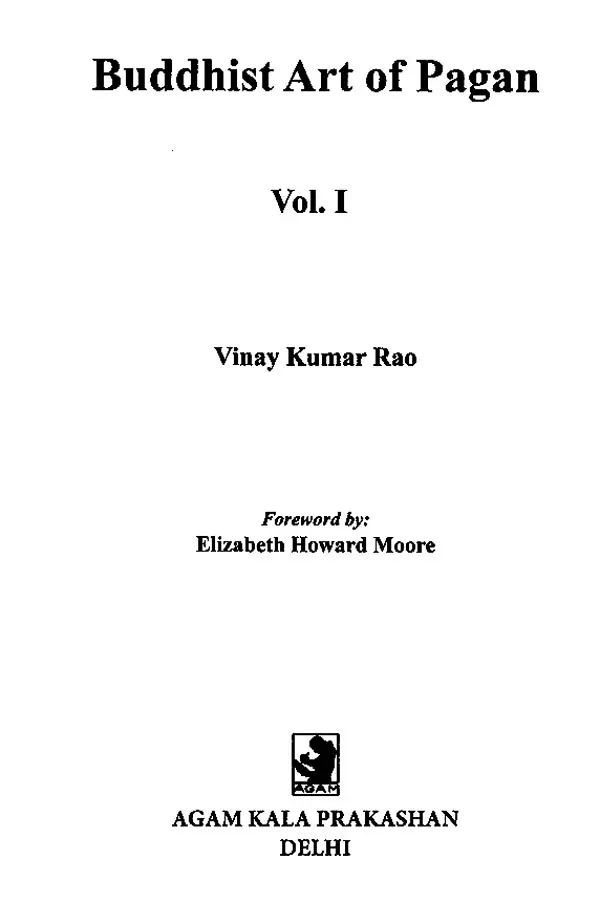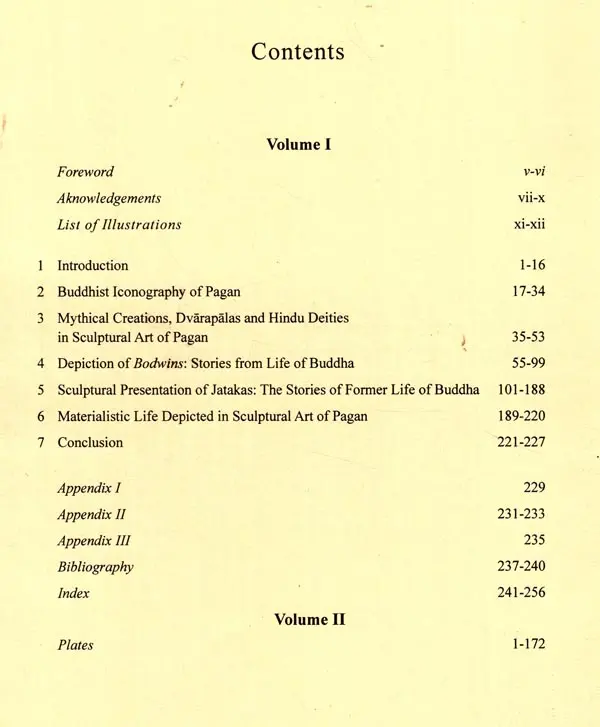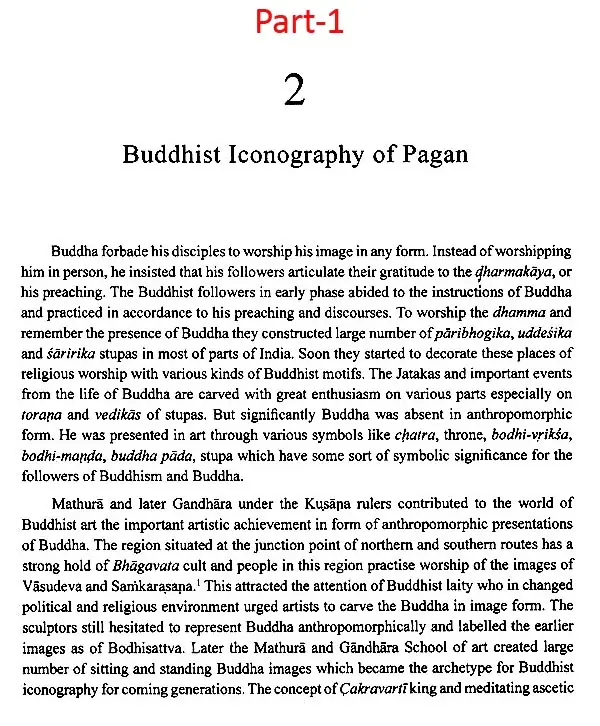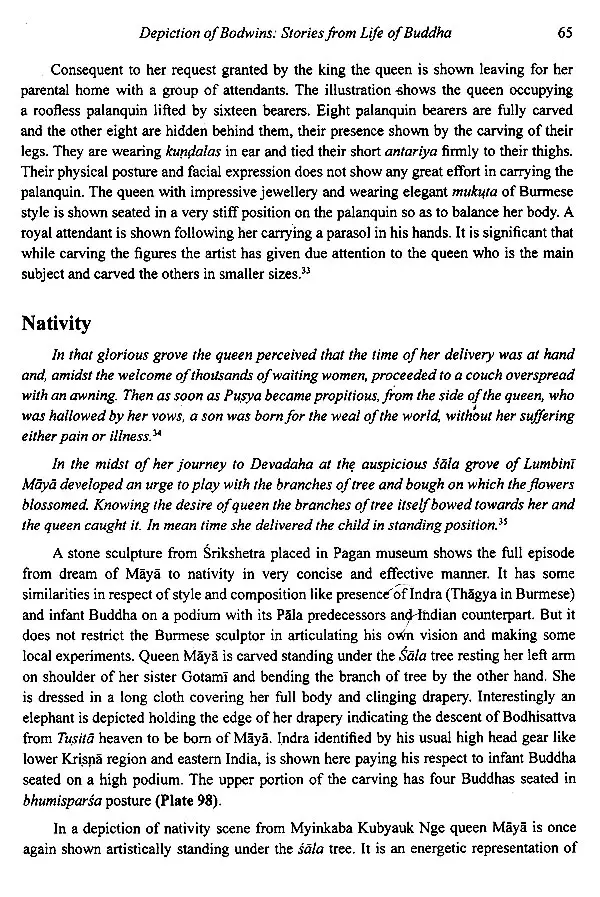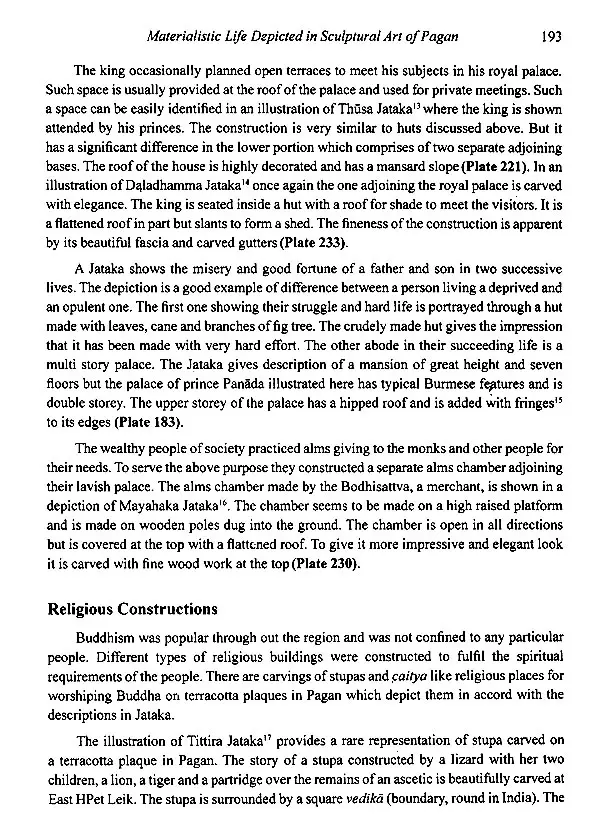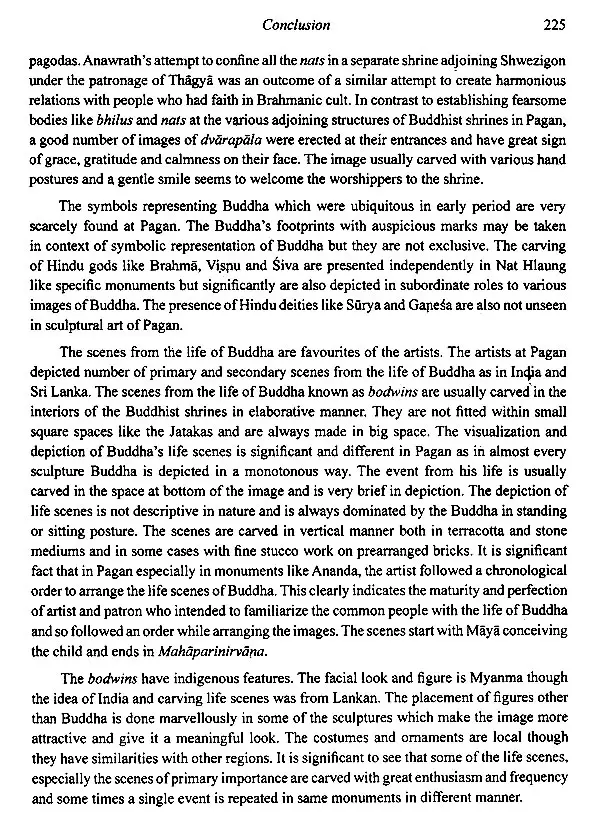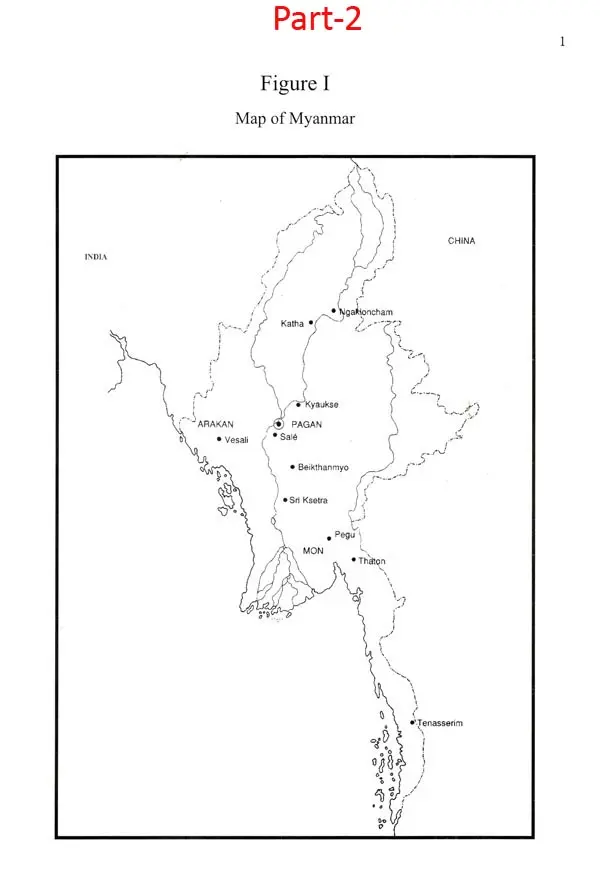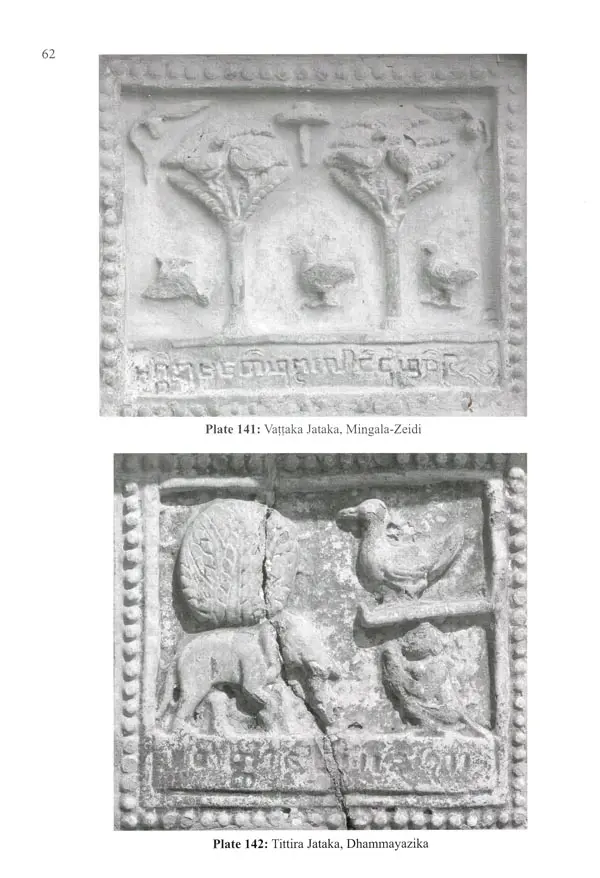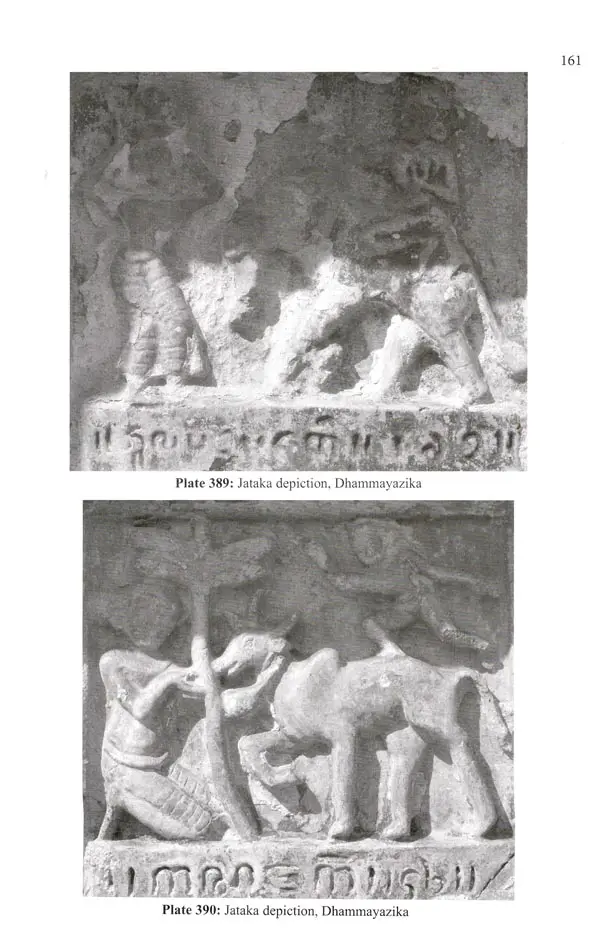
Buddhist Art of Pagan (Set of 2 Volumes)
Book Specification
| Item Code: | UAN564 |
| Author: | Vinay Kumar Rao |
| Publisher: | Agam Kala Prakashan, Delhi |
| Language: | English |
| Edition: | 2011 |
| ISBN: | 9788173201165 |
| Pages: | 480 (Throughout B/w Illustrations) |
| Cover: | HARDCOVER |
| Other Details | 11.50 X 9.00 inch |
| Weight | 2.14 kg |
Book Description
The book presents a comprehensive study of Buddhist Sculptural art of considering Buddhist iconography and pictorial representations of events Jatakas. The book discusses briefly about the sculptural art in Myanmar from the times of its inception and gives Buddhist iconography and life scenes from life of Buddha at Pagan. The Buddhist monuments of between eleventh to Pagan primarily constructed gives us a good glimpse of conjuncture of various artistic styles reflected in Buddhist sculptural art of Pagan. The book discusses Pagan in Myanmar from Buddha's life and development of Buddhist broader description of fourteenth centuries AD various artistic elements flourished in this central part เท เร of Myanmar and give special of emphasis to the indigenous artistic style of representing Jatakas on both glazed and unglazed terracotta plaques. Presenting an initial iconographic analysis of Buddhas of present kalpa, the author proceeds to reconstruct the overall vision of the stone sculptures and terracotta plaques in the interiors and exteriors of Buddhist monuments like Pagoda, Gu, Taik and monastic settlements at Pagan.
VINAY KUMAR RAO is an Assistant Professor in Assam University (A Central University), Silchar, Assam and teaches Ancient History, Culture and Archaeology in Department of History since last seven years. The main focus of his research for many years has been the early Buddhist Sculptural Art, about which he has published two books, four articles and presented large number of research papers in international conferences in India and abroad. His published books are Baudha kalâ mein Nârî, Delhi, 2006 and Buddhist Sculptural art of Lower Krishna Valley, Delhi, 2010. He is a life member of Indian Archaeological Society, Society of South Asian Archaeology and International Association of Asian Heritage.
My first acquaintance with Vinay Kumar Rao was through correspondence beginning in 2009 about his love of Pagan art and deep interest to carry out more research there. It was not until December 2010 that I had the pleasure of meeting him at an international conference on "Perspectives on Buddhism in Myanmar" organized by the Ministry of Culture at the Field School of Archaeology Pyay. Thus I am glad to see The Buddhist Art of Pagan in print, a welcome addition to the small body of literature in English on an extraordinary site. The book is carefully detailed, rich in illustrations (433 plates) and accessible text. It opens with a brief introduction to the history of Myanmar and the city of Pagan. The earlier chronicle history and writing found in the inscriptions of Pagan preamble a summary of the rulers and development of Theravada and Mahāyāna Buddhism. In this and the other chapters, Vinay Kumar Rao describes the iconography and style in a detailed and scholarly manner. The text also shows his deep enjoyment of the narrative and history embedded in the sculpture, painting and architecture of Bagan. In the second chapter, for example, the profile of the iconography is set against precedents in India and in Myanmar, the descriptions structured in relation to the posture and mudra, and in the third, the many types of mythical creations, dvarapalas and Hindu deities, from the Kinnaya to Ganesa. Each is illustrated with examples at Pagan. The fourth chapter is devoted to the Bodawin, stories from the life of the Buddha span the request of the Gods to the Bodhisattva Svetaketu to Descend from Tusită to the Demise or Mahäparinirväna of Buddha. Given the author's close engagement with the stories of Buddhism, it is not surprising to find that the fifth chapter on the Sculptural Presentation of the Jätakas or former lives of the Buddha is the longest chapter in the book. Following a useful summary of the history of Jätaka texts and illustrations as well as details on the glazing of terracotta plaques, Vinay Kumar Rao narrates well over a hundred tales. Each opens with the gist of the Jätaka followed by a concise description of at least one example at Pagan. In the penultimate Chapter 6, the iconography and text focus of the previous chapters broadens out to explore the art in search of the material life of the people of Pagan. The reader's attention guided to a wealth of items from housing for elite and commoners, costume and hair style, musical concerts and other types of entertainment, to beds, vessels, tools, and weapons and conveyances. The author describes hermits and acrobats, snake charmers. and wealthy merchants, chariots and bull carts, all part of the activities of daily life. In the conclusion, the reasons and context of Pagan are profiled, including the blending of Theravada Mahayana and animistic practices at Pagan, the seamless interchange between India and Myanmar, and the similarities and differences of Pagan's art with its predecessors within the country. Vinay Kumar Rao summarizes the body of the volume, giving brief but insightful interpretations on the preferences of sculptors and the meaning of the art for the artists and sculptors who created the sculpture and painting of the city's thousands of temples and gu Three Appendixes close the book: a list of the kings of Pagan, the 108 marks on the footprint of the Buddha following Than Tun, and a table of the development of alphabets in Myanmar including Mauryan, Pyu and Mon examples. The book as a whole is both a pleasure to look at but to use, for information can be easily compared within or across subjects and to the wealth of illustrations that the volume contains. Having seen his 2010 volume on Buddhist Sculptural Art of the Lower Krishna Valley, I congratulate him on the timely completion of The Buddhist Art of Pagan and look forward to reading his future publications.
Myanmar earlier known as Burma is situated in Southeast Asia. Myanmar shares border with China in north, again with China, Laos and Thailand in east and Bangladesh and India in the west, with the Bay of Bengal and Andaman Sea in south. The country has a total area of 678,500 sq km. Out of the total area the land part covers 657,740 sq km, and water about 20,760 sq km (Map 1).
The typological feature of the country divides it into two regions. Upper Myanmar is the interior region of the country and Lower Myanmar, comprises of the coastal region. The country follows a downward slope from the north to south direction. The landscape of Myanmar gives formation to central lowland surrounded by highlands. A horse shoe mountain complex and the valley of the Irrawaddy river system are the dominant topographical features. The mountains of the northern margin rise to 5,881 m atop Hkakabo Razi, the highest peak in south-eastern Asia. The two other mountain systems have north south axes. The Aräkän Range, with peaks reaching more than 2,700 m., forms a barrier between Myanmar and the subcontinent of India. The Bilauktaung range, the southern extension of the Shan Plateau, lies along the boundary between south-western Thailand and south-eastern Lower Myanmar. The Shan Plateau, originating in China, has an average elevation of about 910 m. Generally narrow and elongated in the interior, the central lowlands attain a width of about 320 km across the Irrawaddy-Sittang delta. The deltaic plains, extremely fertile and economically the most important section of the country, cover an area of about 46,600 sq km. Both the Arakan (in the north-west) and the Tenasserim (in the south-west) coasts of Myanmar are rocky and fringed with islands. The country has a number of excellent natural harbours.
